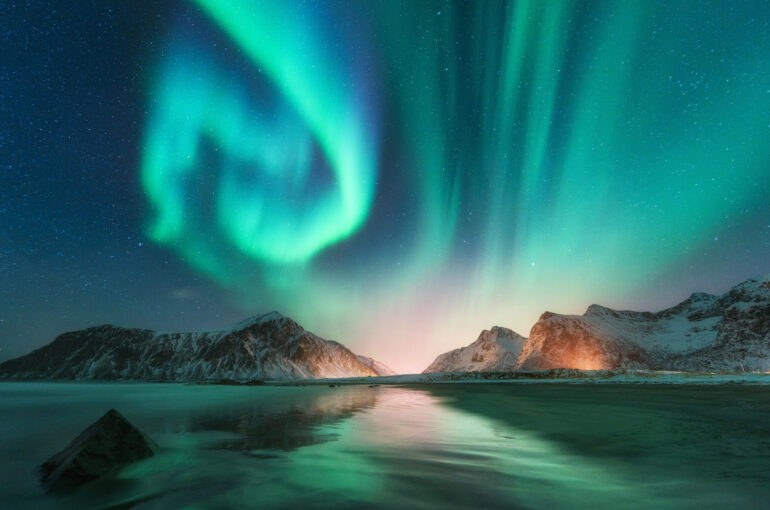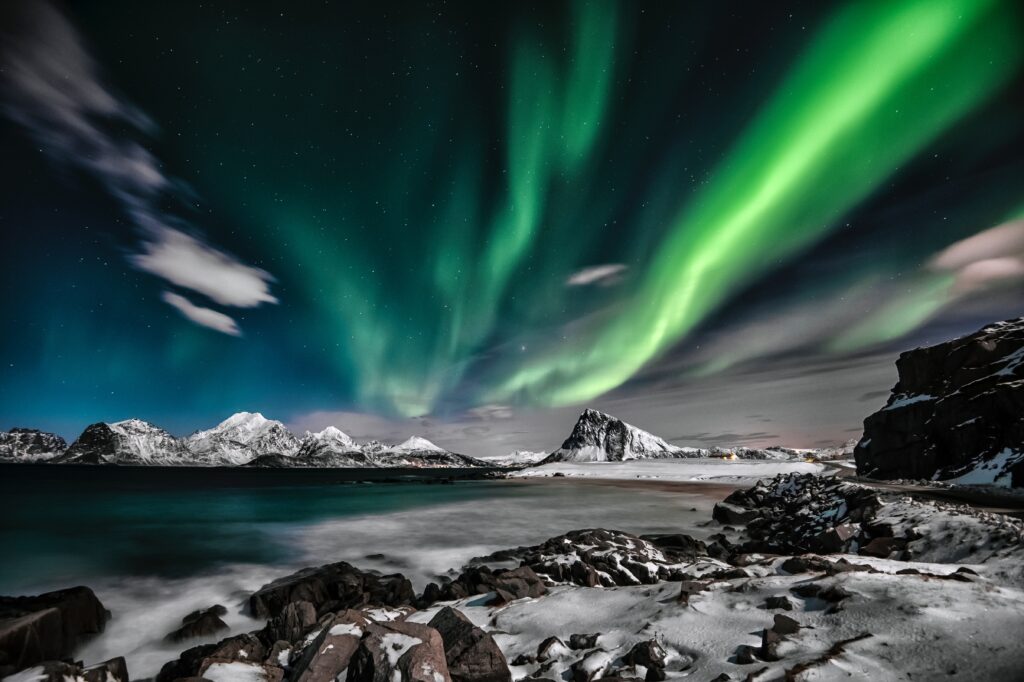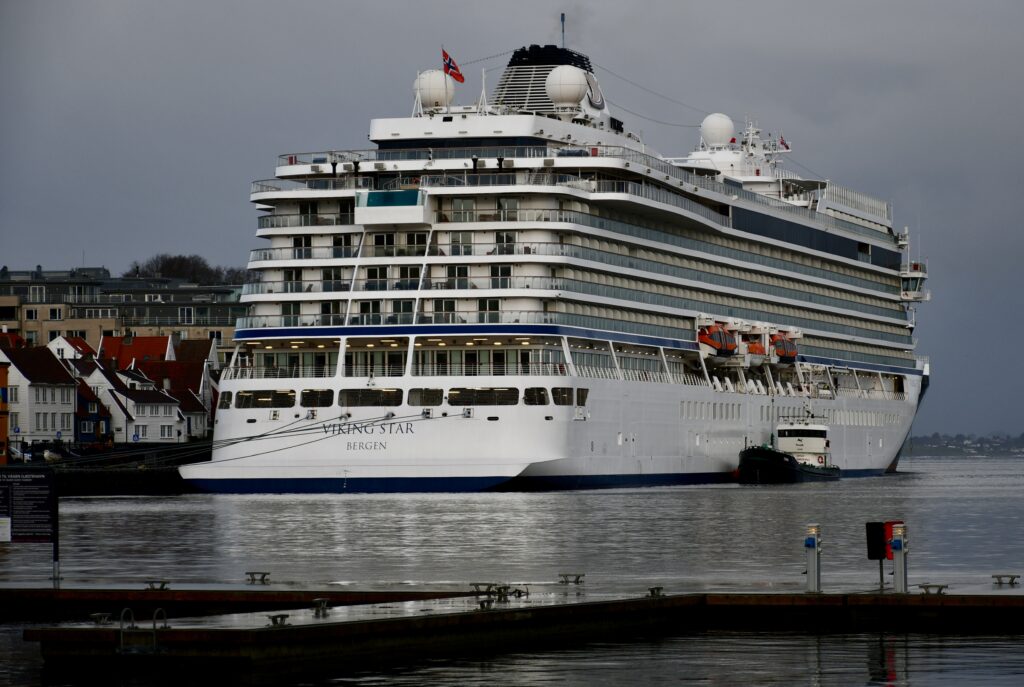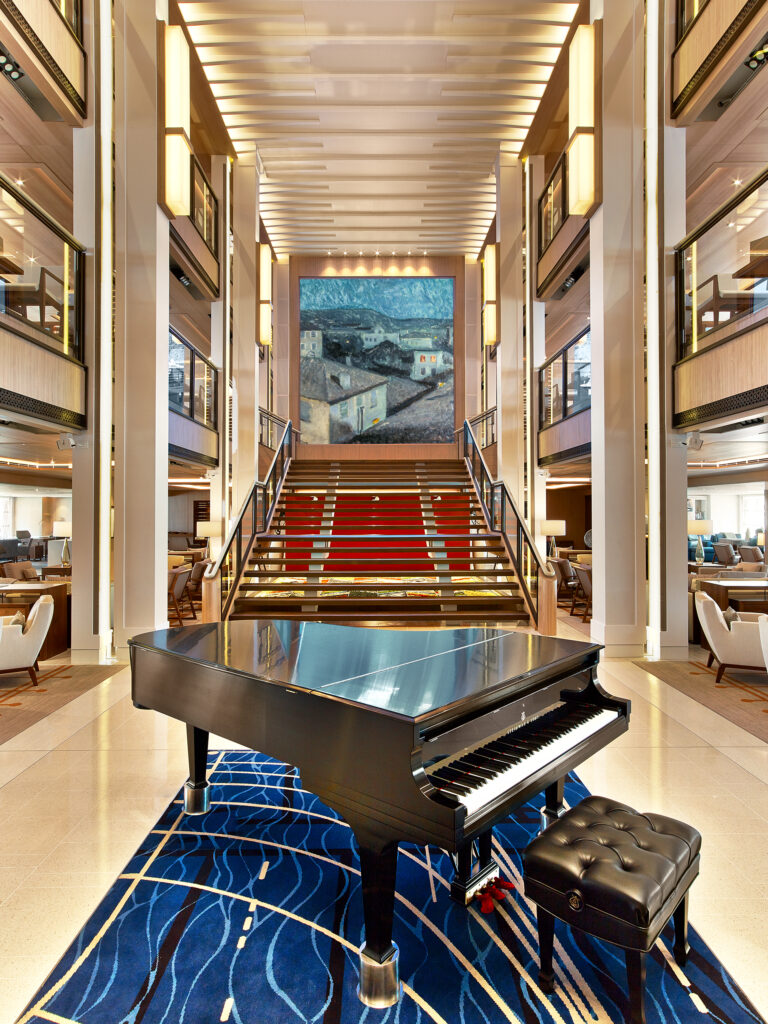What’s the best way to view the Northern Lights … sea or land?

Astronomer Ian Ridpath spoke with the Chronicles of Brian while Hunting the Northern Lights on the Viking Star sailing from London to Norway.
COB: Ian, what is your background?
IR: I’m an amateur astronomer, and I got interested in astronomy when I was a kid. I used to watch Patrick Moore on television, and dreamed of growing up to tell people about astronomy, like he did.
I was lucky enough to be able to get into science journalism in the late 1960s, just about the time when the Apollo missions were going to the moon. Subsequently I became a freelance, and I’ve been writing books and articles for a popular audience, for amateur astronomers, ever since. And now I also do lecturing, which I regard as an extension of that. I’m telling people about astronomy via the spoken word instead of the written word. So I regard myself as a writer and an editor.

COB: So when did you first see the Northern Lights?
IR: You don’t see the Northern Lights very well from Britain but I had seen one or two quite exceptional displays without really fully understanding the physics behind them.
I started working as a cruise lecturer in 2010. Sorry, in 2008. In 2010, I got the opportunity to go on some Northern Lights cruises to Norway. So when Viking started up their Northern Lights trips a couple of years ago, I offered them the opportunity to share my expertise on those trips. So I was on one of the first trips last year and on the series of six … they do a series of six back-to-back Northern Lights trips from England to Norway and back again. So this is the third one in this sequence.
Natural attraction
So it’s been nice to be able to come back on these wonderful ships because they really do look after you very well, and tell people who’ve come from … we get mostly North Americans, but Brits and Australians as well coming to see the Northern Lights, which are probably the most magical phenomenon in nature. Some people like solar eclipses better, but I prefer aurora because you get more chances to see an aurora.
COB: So it’s interesting that a natural phenomenon like that is now a tourist attraction.
IR: It is. Apparently all the surveys show that Northern Lights is somewhere near the top of almost everybody’s bucket list. Coming to Norway, in my experience, is one of the best ways for seeing it.

COB: So what are the Northern Lights?
IR: At their most basic, they are an electrical phenomenon of the Earth’s upper atmosphere which causes the upper atmosphere to glow and produces these ghostly glowing shapes which flow and move. The driver of this is the flow of particles, atomic particles from the sun, which is called the solar wind. When the solar wind from the sun reaches the Earth, it’s funnelled by the Earth’s magnetic field into a ring around the north and south magnetic poles. So that’s why you need to go north to see the aurora or, if you’re in the Southern Hemisphere, it is why you’d need to go to somewhere like Tasmania. Hobart actually has very good views of the Southern Lights.
Land, sea or space?
COB: Is there a best place in the world to see the Northern Lights?
IR: No. Anywhere under the ring of activity is good, this ring of activity, which is called the auroral oval iscentred on the Earth’s magnetic poles. In the Northern Hemisphere, anywhere in northern Europe, Scandinavia, Iceland, Greenland, Canada, Alaska, Siberia, they’re all good. In Australia, certainly the southern parts of Australia and Tasmania are the best because really you have nothing between you and the Antarctic except a load of sea so you’ve got nice clear views to the south.
COB: What about land, sea or space, what’s the best view?
IR: Well, it varies. I like traveling on ships. So when you come on a voyage like this, you’re not just seeing the Northern Lights, you’re also seeing Norway, which I think is a very beautiful country, and the people are wonderful. The scenery’s magnificent, the snow covered mountains. The downside of that is that you’re on a moving platform so it makes it more difficult to take photographs. So some people will prefer to go on land, and maybe they’d come to Tromso and do a land excursion where they would take you out to find a clear sky and then you’d stand and photograph the Northern Lights from the ground. Both approaches have their merits, but I actually like being on a ship.
It’s a game of patience
COB: It’s a game of patience, isn’t it?
IR: It is. You can’t dial it up. I say it’s like a big game hunt because the ship will take you to where the prey lives, which in this case is the north of Norway, under the auroral oval, but you can’t be guaranteed that the animals are going to come and drink at the waterhole, so to speak. You can’t be guaranteed that there will be any particular activity. The thing you’re most dependent on, the aurora watcher’s biggest enemy, is cloud, and you’ve got to have clear skies.
COB: So are any particular months better than others to see the Northern Lights?

IR: Yes. Well, you’ve got to go when it’s dark because there’s no point coming in the summer because otherwise the sun never sets, you’re never going to get any dark skies. But really, any time, in the Northern Hemisphere, any time between late October and late March, really between the equinoxes, and clearly six months reverse in the Southern Hemisphere.
COB: You spoke in your lecture about the difference between the naked eye’s view and a camera’s view. Can you just explain a little bit more about that?
IR: This is an important thing to realise because people see pictures in books, they see pictures on the internet showing the aurora bright green. Now it doesn’t appear bright green to the naked eye, and that’s not because the pictures are faked, but it’s because the camera is more sensitive than the human eye. The lights are quite faint. The human eye is not sensitive to colour with very faint light. So with a camera, you can take a time exposure, you can build up that light so that it shows bright green.
Exposure is the key
You’ve only got to really take a snap and look at the back of your picture and … or the back of the camera, and you can see there’s green on there, which to the eye, it will probably appear only grey green, it may just look like a cloud. Sometimes it is cloud, but the best way to distinguish it is to take a picture. It doesn’t have to be a particularly good picture, but if it comes up green, it’s an aurora. If it’s grey, it’s a cloud. But it’s to do with the human eye. The human eye does not see faint colours very strongly, and we now know that men and women actually see colours rather differently. So women often see more colour in the aurora than men do.
COB: At the moment we’re caught up in a debate about climate change. It’s almost part of every conversation. Is it changing how we see things like the Northern Lights?
IR: No. The Northern Lights, they’re so high up they don’t affect the Earth’s weather at all. This is happening 60 miles up, or above. It’s the height where satellites orbit. There may be some effect on the Earth’s lower atmosphere but I’m not a meteorologist, I don’t understand that, and it’s very complicated anyway. But no, I think they’re two quite distinct things.
COB: You spoke about how it changes over the course of two or three hours. How do you know when it’s a great one?
IR: Well, you’ve got to have seen them before of course, but the really good ones are bright and colourful and they writhe and they move. You can get just a very static arch, a very quiescent thing, which just sits there for a while and you stand there looking at it, wondering if anything is going to happen. Then after maybe half an hour or so there’ll be brighter patches and maybe a few rays go up. It’s almost like trying to start a fire. You’re just waiting for it to catch and then suddenly it will almost catch light and brighten and start to writhe and move. You might even get this beautiful purple-y pink colour, kind of a strawberry pink colour on the bottom edge, and that’s when you know it’s a really good aurora. It’s like seeing a snake writhing in the sky.
Legends of the Northern Lights
COB: And the legends? There’s many. Which one do you put most faith in? Which one do you enjoy telling the story of?
IR: I actually like the story about the swans who tried to fly north, see who could fly the further north, and they froze and they were trying to flap their wings to escape, and that somehow causes the aurora. Because some aurora really do look like swans. Some aurora look like dragons as well. There is a view that dragon legends were actually caused by aurora. This is what people in China were seeing thousands of years ago. They were seeing aurora and they thought there were dragons in the sky. So maybe they were actually seeing aurora.
Ian Ridpath is a guest speaker on Viking Cruises as part of the company’s enrichment program.

